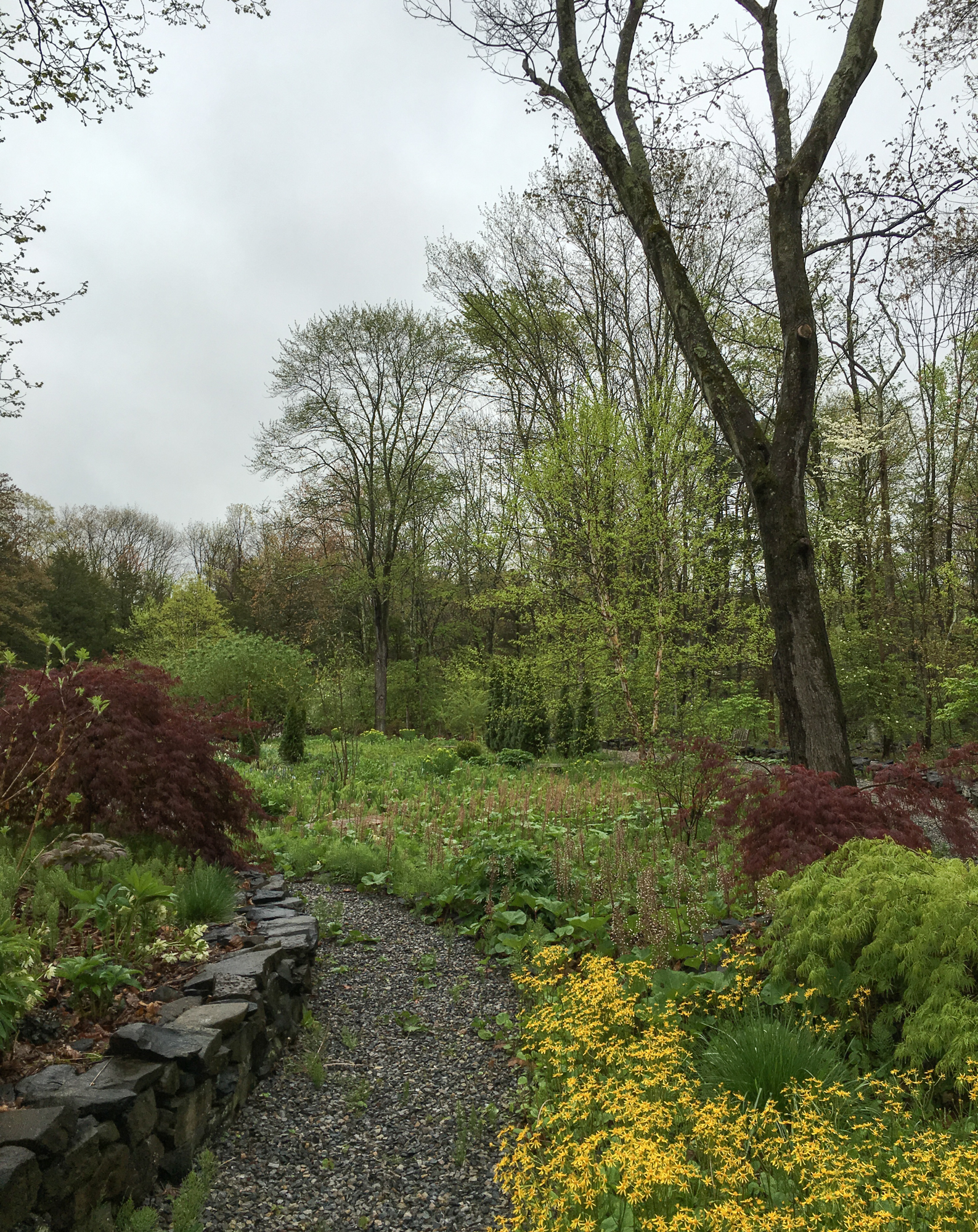Garden Diary: late winter cleanup
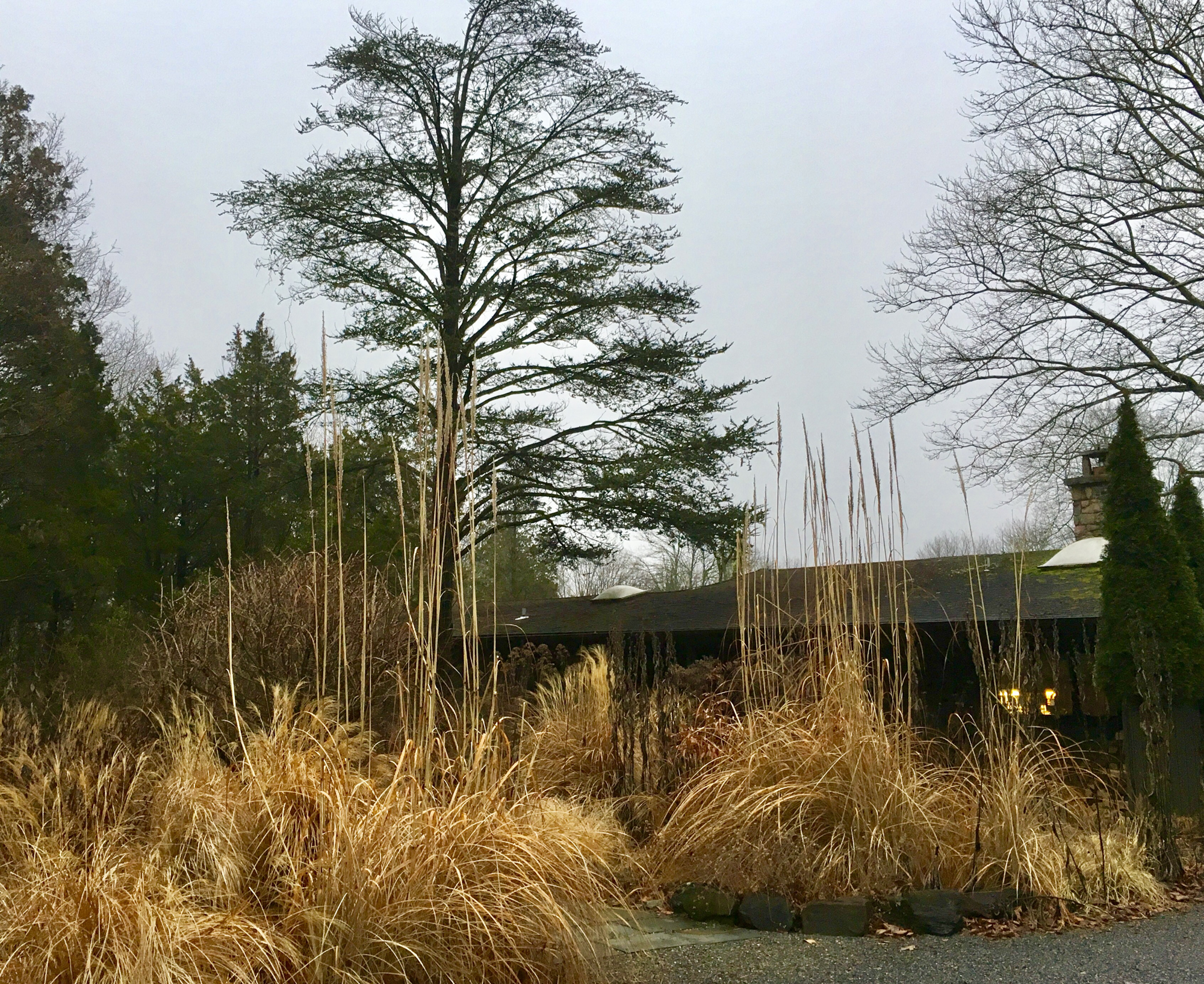 This was the front garden on January 23. It lasted well into winter.But old growth must make way for the new, so last week my garden helper and I began cutting and burning in the back, and largest, part of the garden. This week we started with the front garden.
This was the front garden on January 23. It lasted well into winter.But old growth must make way for the new, so last week my garden helper and I began cutting and burning in the back, and largest, part of the garden. This week we started with the front garden. Cutting and burning takes careful planning. Grasses must be cut and moved if too near shrubs, under tree canopies, or too near the property line, so the two of us do a kind of dance--cutting, moving, mounding, and burning.
Cutting and burning takes careful planning. Grasses must be cut and moved if too near shrubs, under tree canopies, or too near the property line, so the two of us do a kind of dance--cutting, moving, mounding, and burning.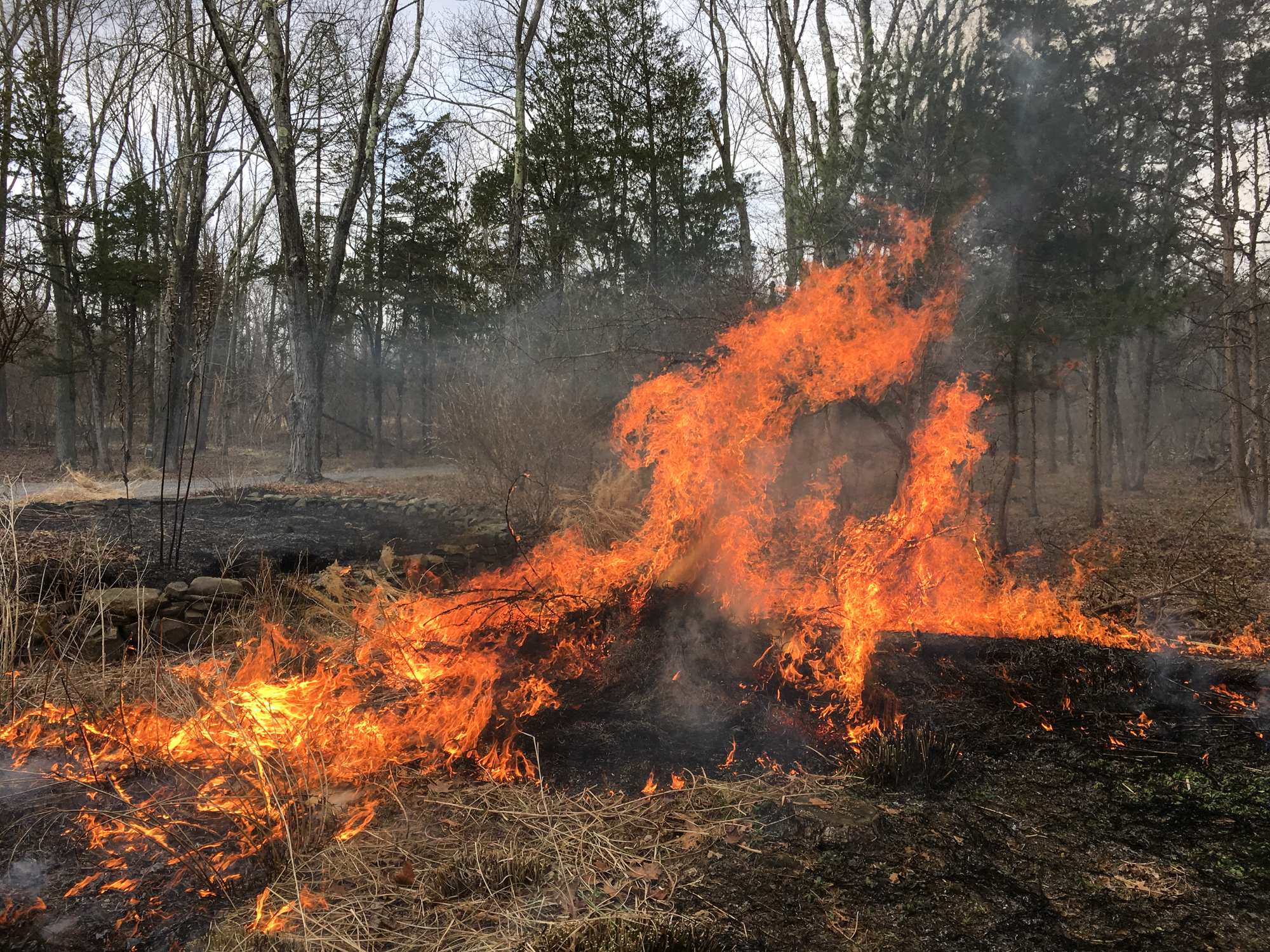 The largest, highest flames last only 15 or 20 seconds, then quickly die down to a more controlled burn.
The largest, highest flames last only 15 or 20 seconds, then quickly die down to a more controlled burn.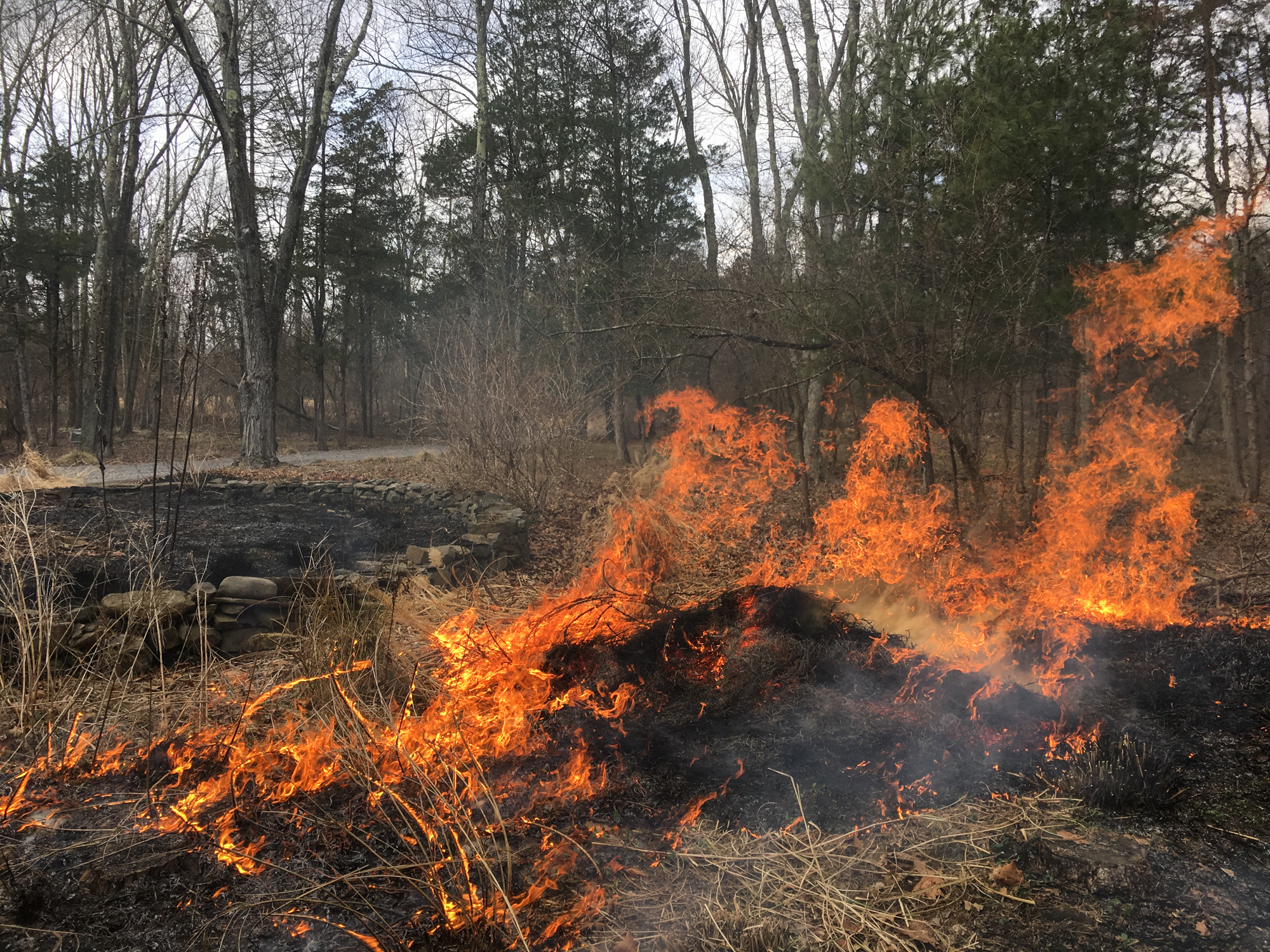 A full-flowing hose is always ready to extinguish any errant flame, which likes to creep outward, burning the leaf cover.
A full-flowing hose is always ready to extinguish any errant flame, which likes to creep outward, burning the leaf cover.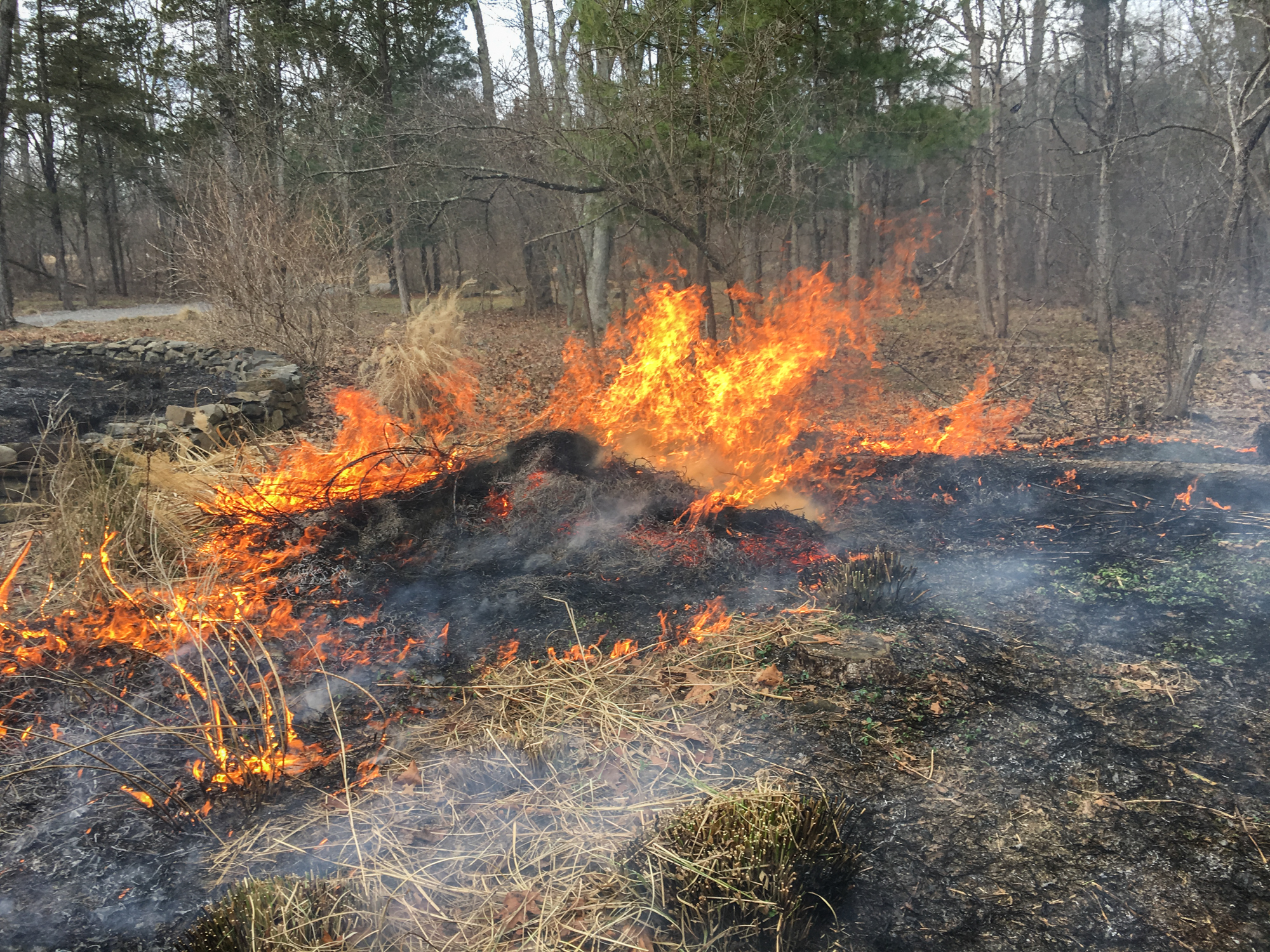 After an area is burned, I wet it thoroughly with water, rest, and move on to another part of the garden.
After an area is burned, I wet it thoroughly with water, rest, and move on to another part of the garden.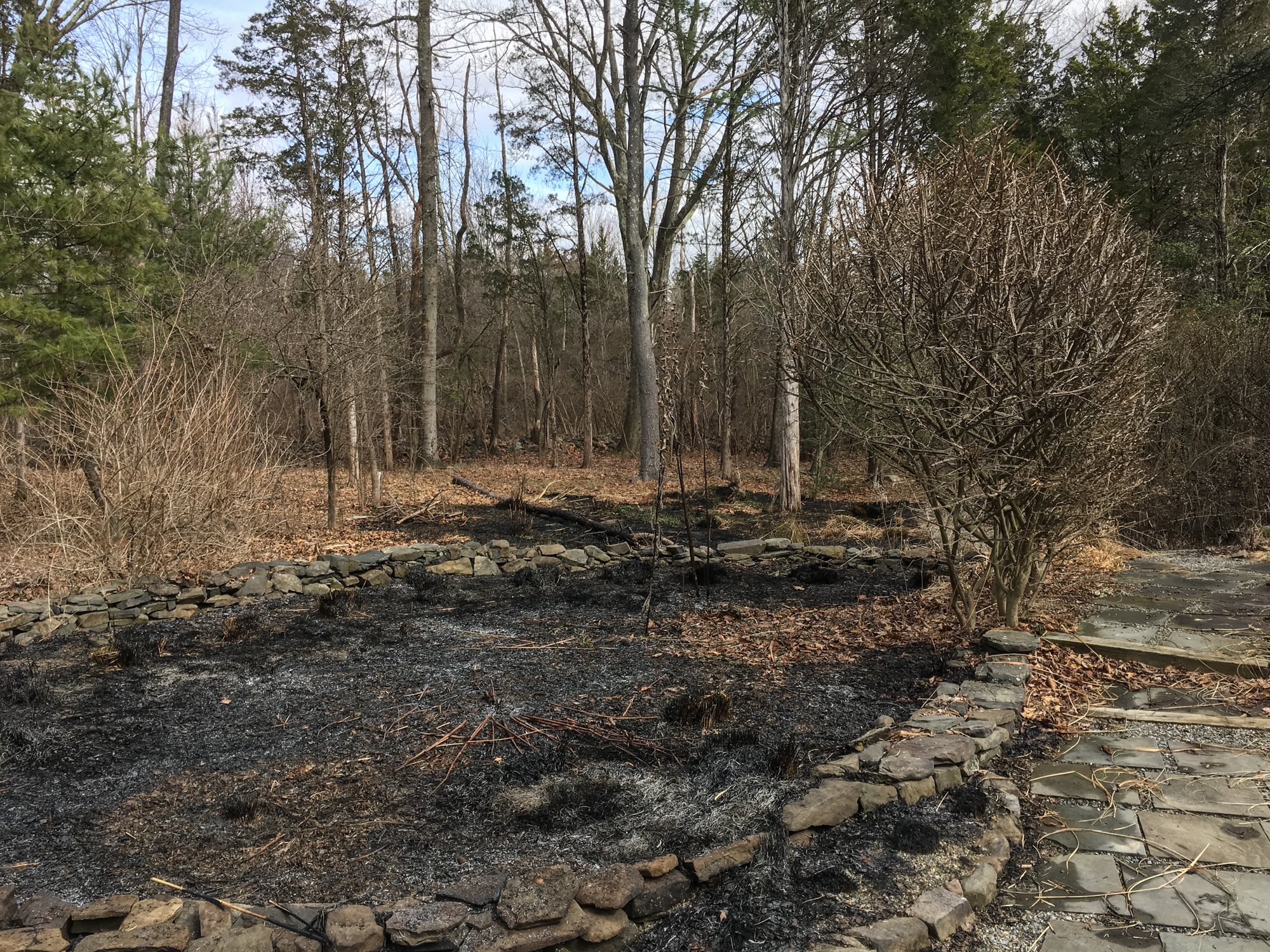 Later we'll use a weed trimmer to chop any remaining large pieces, sweep the paths and paved areas, then wait for the rains of spring to wash the charred matter into the soil. The fire opens the earth a bit, so I often do some seeding now (in addition to seed I broadcast in the autumn).
Later we'll use a weed trimmer to chop any remaining large pieces, sweep the paths and paved areas, then wait for the rains of spring to wash the charred matter into the soil. The fire opens the earth a bit, so I often do some seeding now (in addition to seed I broadcast in the autumn).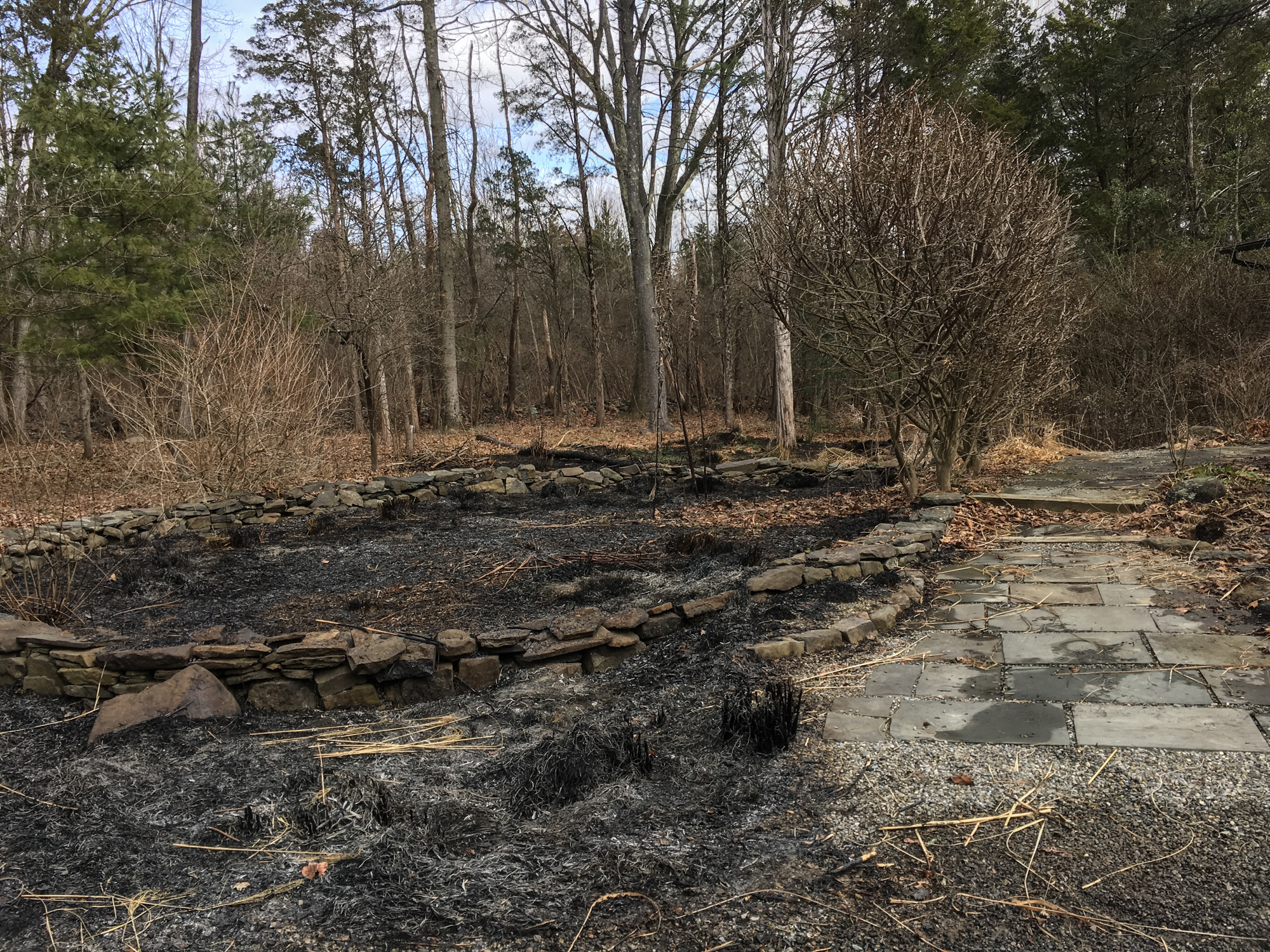 The black remnants of fire absorb heat from the sun and stimulate new growth as the weather warms.One part of the cleanup, cutting the tall perennials that won't burn, is usually the last task.
The black remnants of fire absorb heat from the sun and stimulate new growth as the weather warms.One part of the cleanup, cutting the tall perennials that won't burn, is usually the last task.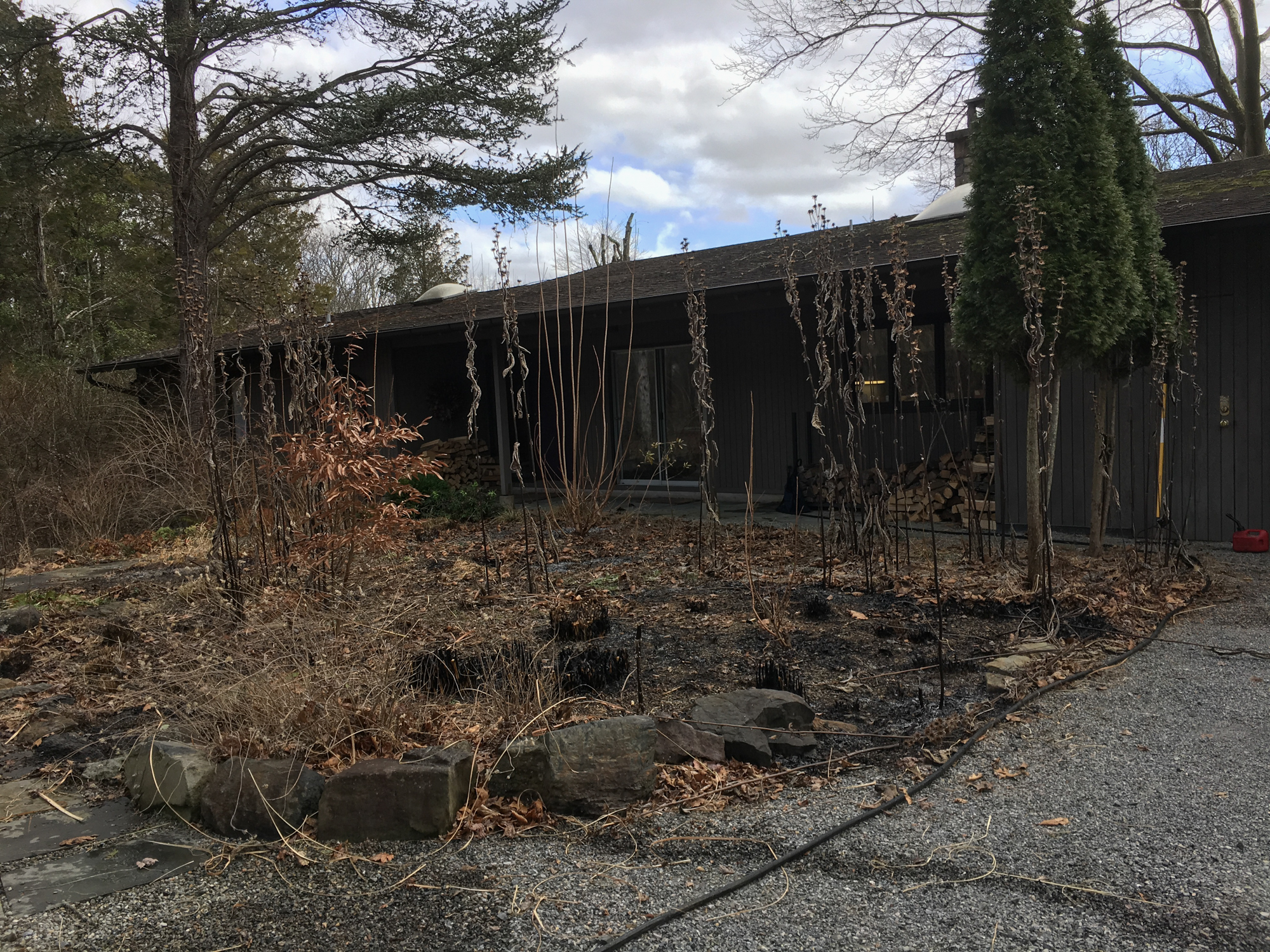 New growth will begin to show almost immediately if we don't have freezing cold for long periods. By April the ground cover layers will have emerged, and by mid-May the garden will be green again.
New growth will begin to show almost immediately if we don't have freezing cold for long periods. By April the ground cover layers will have emerged, and by mid-May the garden will be green again.